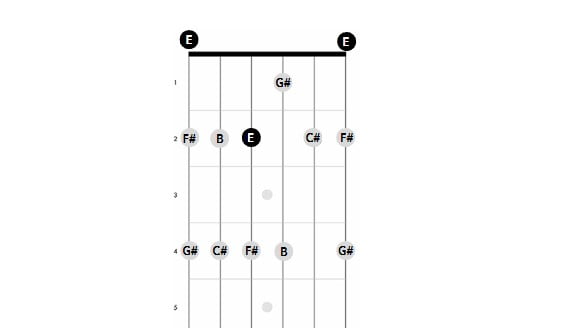If you are new to playing guitar, you may not be familiar with pentatonic scales. However, learning these scales can help you unlock a whole new world of tones and improve your proficiency with the instrument. For instance, the E major pentatonic scale is a great scale to expand your guitar runs and help you craft solos more effectively, as well as develop a better understanding of notes in relation to one another on various positions on the fretboard.
Once you have become acquainted with the E major pentatonic scale, you will be able to recognize it more easily in songs from various genres, including rock, country, folk, and blues. You can hear the E major pentatonic scale in songs such as Paramore’s punchy “Ain’t It Fun” and Green Day’s alt-punk classic “Basket Case,” among others.
Get ready to warm up your fingers and become familiar with the E major pentatonic scale. We will show you the five notes included in this scale, as well as how to play it using guitar charts and tablature. Let’s get started.
Contents
NOTES ON THE E MAJOR PENTATONIC SCALE
Pentatonic scales are easy to play because they consist of only five notes, as indicated by the prefix “penta,” which comes from the Greek word for “five.” This pattern is easy to remember because it has fewer notes. The major pentatonic scale follows a formula of 1-2-3-5-6 notes of a given scale.
The E major pentatonic scale comprises only five notes, over half of which are sharp notes. As you play these notes across the fretboard, you will repeat all five notes in higher or lower octaves. These five notes are:
• E
• F#
• G#
• B
• C#
These five notes can also be found among the seven notes that make up the E major scale, with A and D# being the other two. Moreover, the notes E, G#, and B make up the E major triad chord, allowing you to connect this scale to specific chords and their formation.
E MAJOR PENTATONIC SCALE POSITION
There are different ways to play the E major pentatonic scale, but in this lesson, we will focus on the open position. To begin, locate the 2nd fret of the low E string. You can use the chart below to learn the open position of the E major pentatonic scale. This chart represents your guitar’s neck, with each dot indicating which note to play on a particular fret and string. If you see a dot with a note above the string, play the string in an open position. The dark dots on the chart represent the root note of the scale, which in this case is E.
Open position
To start playing the E major pentatonic scale in the open position, strum the open low E string and then place your index finger on the 2nd fret of the same string. Next, stretch your ring finger to the 4th fret on the same string. As you play through the notes in this scale, you will notice that your index finger will play the 2nd fret of each of the six strings (plus the 1st fret of the G string), while your ring finger will play the 4th fret when playing this scale.

E MAJOR PENTATONIC SCALE TAB
Although the E major pentatonic scale can be played in various ways across the guitar’s neck, we will focus on learning how to play the same open position E major pentatonic scale using tablature instead of a chart.
While some guitarists find it easier to read charts (as seen earlier), others may prefer to learn scales using tabs. Therefore, to provide you with a different approach, let’s attempt to play the E major pentatonic scale using tabs:
Open position tab

The ascending version of the E major scale begins on the open E string, with E as the root note and your starting point.
If you examine this version of the E major pentatonic scale in the open position, you will notice that it follows a pattern of playing three notes on one string, then two notes on the next string, and then repeating that three-two pattern across the next two strings, ending with a single note (the fifth fret).
Despite playing several notes to move from one side of the fretboard to the other, you only played a total of five distinct notes (E, F#, G#, B, and C#) in the E major pentatonic scale.
E MAJOR PENTATONIC SCALE EXERCISES
The most effective way to memorize the E major pentatonic scale is to practice playing it both ascending and descending. Begin with the root note of E, followed by F#, G#, B, C#, and then a higher E. Then, work your way back up the scale, starting with the higher E, followed by C#, B, G#, F, and low E.
Spend some time experimenting with this scale in the open position and its other variations.
To learn more pentatonic scales, chords, and musical theory, visit our Guitar tunio today
